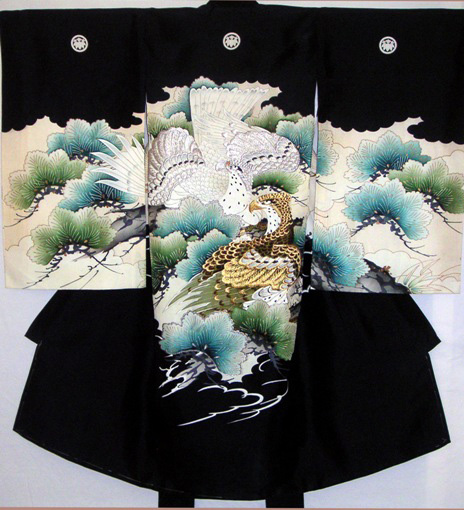Description
A young boy of noble standing wore this finely woven Silk Boy’s Kimono for Boys’ Day in Japan, as well as in the Autumn months. This “one in a million” design of dramatic Hawk resting in a stylized Japanese Pine is breathtakingly realistic. The Hawk (“Taka”) or Falcon is often considered the king of birds in Japan. Warriors especially liked the bird because of its fierce and powerful nature, as well as the visually striking patterns of its plumage. These Hawk perch on stylized branches of the Pine (“Matsu”), which is the tree of longevity. Thus, the symbolism of this Kimono represents power and long life. Reinforcing the nature of this striking design is the ancient Family Crest (“Mon”) of the Bellflower (“Kikyo”). It is a five petal indigo flower which blooms in the Fall and demonstrates exactly which season in which this Kimono was intended to be worn. As a crest, it was first adopted by the warrior class around the 13th Century due to it extraordinary beauty.
The “Rice Paste Resist” or “Tsutsugaki” method of hand painting has been utilized wherein each and every color was applied separately, while the remainder of the Silk has been painted out in the rice paste. The elaborate embroidery in brilliant white and yellow gold threads were then added to highlight the dramatic painting of the Hawk. There are also touches of liquid gold within the design. Another interesting element of this fascinating Boy’s Kimono is the intricate embroidery holding the ties in place on the front of the Kimono. These were generally added by the boy’s mother as a harbinger of protection for her son. The Family Crest appears 5 times on the shoulders and back of the garment and indicates that it was to be worn for formal occasions.
From the high sheen of this finely woven Silk to the actual painting and fabulous precious metal enhancements, this Boy’s Kimono is a valued heirloom.







